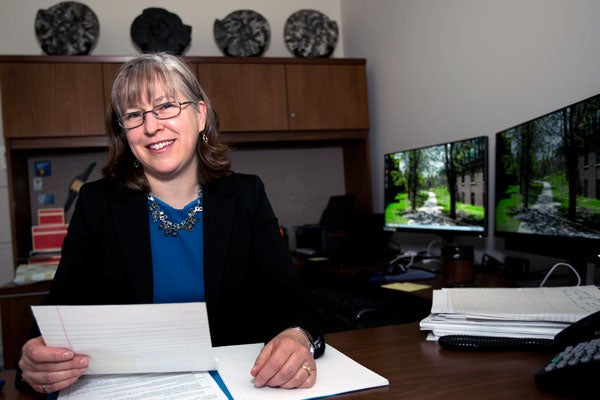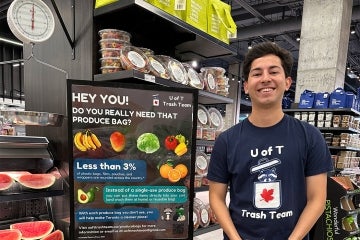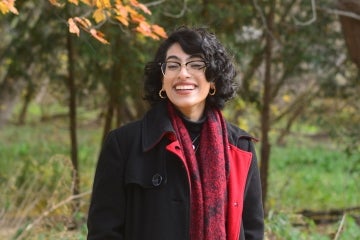
Transforming the undergrad experience: meet Susan McCahan
Published: April 15, 2015
As an award-winning professor of mechanical and industrial engineering, Susan McCahan can certainly tell you how machines work. But there’s one she will probably never get tired of studying: the human brain.
McCahan has never been interested in merely teaching engineering, but in finding new ways to deliver its ideas to students. In McCahan's first-year course, Engineering Strategies and Practice, students don’t just sit in seats taking notes: they go out in the field, working on design projects with real clients.
In the process, they acquire authentic design experience – as well as seeing the real-world application of concepts they’ve learned in class.
While working her way up to vice-dean, undergraduate in the Faculty of Applied Science & Engineering, McCahan started courses and conducted an array of workshops on innovation in teaching and learning. As associate chair, she also redesigned departmental curriculum. Now, in her new position as vice-provost, innovations in undergraduate education, it’s her job to champion the development of bold new teaching practices across all departments and faculties at U of T.
“Reimagining undergraduate education is one of Meric Gertler’s three priorities as president and that really fits with a good deal of work that we’ve been doing over the last number of years,” says Vice-President and Provost Cheryl Regehr. “The idea of the vice-provost, innovations in undergraduate education is really to try to pull all this [our existing activities] together and champion innovation.”
Innovation is McCahan’s passion. Shortly after she began teaching at U of T in 1992, she became discouraged by the limited system of rote learning – from textbooks and lectures – in fashion at the time.
“My students seemed to expect that that was what they needed to pass the course,” she says, “and on the flipside, that was what was being tested.”
Student laboratories were experiential, to be sure, but not enough for McCahan, who believed they only encouraged young learners to “follow recipes that somebody else had already laid out.” Consequently, she encouraged new discoveries in the labs, and instituted collaborative (and of course service) learning.
In recent years, other professors at U of T have also been redesigning learning in their own undergraduate classes. Service learning is an essential component in an increasing number of courses – and not just in engineering.
Professor Shauna Brail’s urban studies classes, for example, go on field trips and work on internships. Professor Reid Locklin’s religion students put social justice in action through their work with Intercordia, a community service organization. And upper-year undergraduates in philosophy mentor new students via the Socrates Project, started by Professors Donald Ainslie and Joseph Heath.
Another key area of innovation that McCahan will champion: technology-enhanced learning. Instructional technology, she says, is one of the fastest-growing high-tech sectors in the world – and something that Regehr says is “really helping us develop means of pedagogy that meet the diverse learning needs and learning styles of our students.”
Digitally supported learning at U of T currently takes many forms, and is poised to take many more. (Read more about online courses at U of T.) There are fully online credit courses, to service the needs of students without access to a brick-and-mortar campus; there are also non-credit MOOCs – massive online open courses – that can be taken for free by thousands of learners across the world. But, as McCahan and Regehr point out, technology is making its way into the traditional classroom as well – via online lectures, interactive quizzes, videos and other multimedia innovations.
New technology, says McCahan, also “gives us the ability to watch students learn. When they’re engaged with these online materials, we can see what they’re doing. We can track how much time they are spending on videos, or how many times they tried a quiz before they got the right answer. We can see what works and what doesn’t, and start to draw correlations between behaviour and success.”
Lectures and note-taking are still very much a part of the university experience: McCahan’s job is to oversee additions – not subtractions – to the many ways in which students can learn. She says that while moving beyond old teaching and testing habits can be difficult for some instructors, it’s also critical.
“Creating effective teaching methods is not easy, because learning is not a simple thing. Instructors need a different skill set now,” she admits. But the hard work of acquiring that will, she says, all pay off in the end.
“We have moved very dramatically into a new era, where we can create much more authentic learning experiences and assessments for students.”



